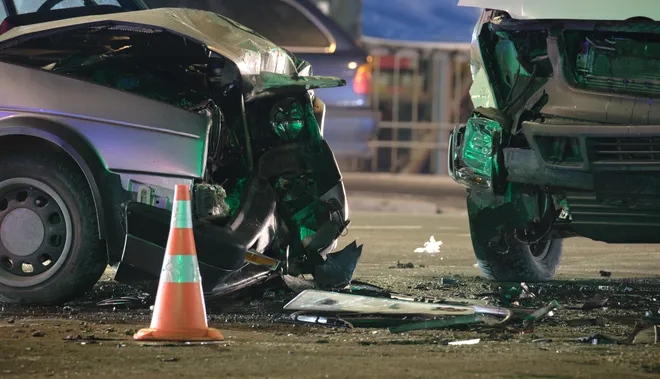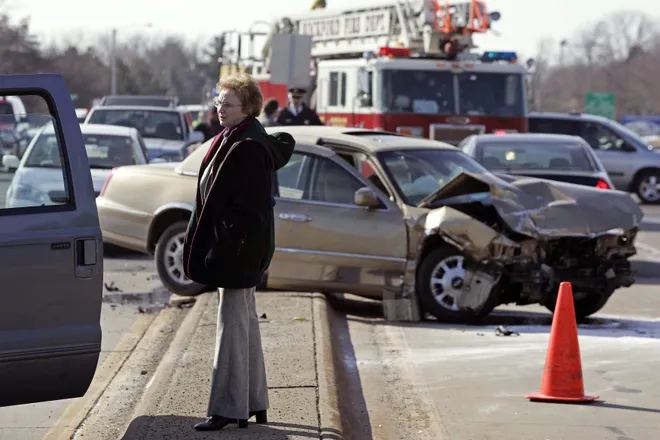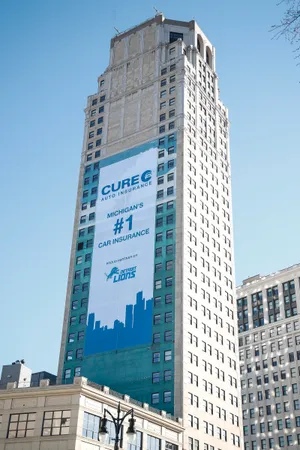More motorists are dropping insurance. Guess who pays the price?
Uninsured motorists are on the rise, and they are driving up the cost of auto insurance for the rest of us.
The car insurance industry is caught, analysts say, in a vicious cycle of spiraling costs. Car insurance costs have surged by 52% in three years. Rising premiums are prompting more motorists to drop insurance, and their choice is pushing up premiums for other drivers.
The share of motorists without insurance rose from 11% in 2019 to 14% in 2022, the latest data available, according to the nonprofit Insurance Research Council.
Initial data for 2023 suggests the share of uninsured motorists continued to rise, a council spokesman said. And survey data from J.D. Power shows a further upward trend in the first half of 2024.
“We’ve gone now 2½ years of pretty historic increases in auto insurance premiums,” said Stephen Crewdson, senior director of insurance business intelligence at J.D. Power. “Some households are really struggling to make that payment.”
Lower your auto insurance costs: Find the best car insurance

The rise in uninsured motorists began in the pandemic
Uninsured motorists were trending mostly downward in the 2010s. The trend reversed in 2020 with the arrival of the COVID-19 pandemic: Americans drove less, and some chose to drop their coverage.
In the years since, auto insurance rates have gone through the proverbial sunroof. Prices spiked for new and used vehicles alike, owing to supply chain disruptions and other factors. Prices rose for replacement parts and labor. Accidents increased in frequency and severity. Motor vehicle thefts ticked up.
“No matter which way you turn, everything is causing car insurance rates to increase,” said Shannon Martin, an insurance analyst at Bankrate, the personal finance site.
The average cost of full-coverage car insurance reached $2,543 in 2024, up 26% in a single year, Bankrate reports.
Analysts blame rising premiums for the increase in uninsured motorists.
“It’s economic pressures on families,” said Mark Friedlander, spokesman for the Insurance Information Institute, a nonprofit affiliated with the Insurance Research Council.
“You’re talking about housing costs, escalating mortgage rates, interest rates,” he said. “Grocery bills are more. Health care is more. Are you going to put groceries on the table, or are you going to buy insurance?”

Driving without insurance is 'a very serious offense'
For cash-strapped households, dropping car insurance might seem the only viable option.
“It only feels important when you get into an accident,” Martin said.
Yet, driving without insurance is illegal in every state save one, New Hampshire. An uninsured motorist who draws the attention of police can face fines, not to mention legal penalties such as a suspended license and registration.
“It’s a very serious offense,” Friedlander said. “It’s not a parking ticket, let’s put it that way."
The District of Columbia has a higher share of uninsured motorists than any state, 25.2% as of 2022. Next on the list: New Mexico (24.9% uninsured), Mississippi (22.2%) and Tennessee (20.9%).
Insured motorists paid about $16 billion in coverage for uninsured or underinsured motorists in 2020, the latest available data, Friedlander said. That coverage protects an insured motorist against drivers whose insurance is either nonexistent or not enough to cover the costs of an accident. And the cost of that coverage is rising.
“As more and more people are uninsured, that portion of your policy is going to reflect that,” Crewdson said. “The insurance premium is just reflecting what’s happening in the world.”

Insurance companies have been losing money, too
No driver likes rising insurance costs. But you can’t really blame the insurance industry, analysts say, because the industry has been losing billions of dollars a year.
Auto insurers have paid out more money in claims than they have collected in premiums in each of the past three years, Friedlander said.
Insurers have lost money because they haven’t raised premiums fast enough to keep pace with the higher costs of claims.
The consumer price index for used cars, for example, rose by more than 60% between mid-2020 and early 2022, when prices peaked. That meant higher replacement costs for cars totaled in accidents.
“Used cars were going up in value rather than down,” Crewdson said, defying common wisdom that cars lose value over time. “Insurers had to wait to see if those price increase trends were permanent.”
The good news for consumers, Crewdson said, is that the insurance industry is catching up with rising prices in the automotive industry. That means insurance premiums probably won’t continue to rise at the same rate.

More:Wait, that's my new car insurance quote? Here's how to save on auto insurance
Progressive, the nation's second-largest auto insurer, has actually lowered rates in some states and is looking toward “relaxing rate levels” in the months to come, the company said in a letter to shareholders about second-quarter results.
“If current trends continue,” Crewdson said, “I would expect we see the increases level off.”
Disclaimer: The copyright of this article belongs to the original author. Reposting this article is solely for the purpose of information dissemination and does not constitute any investment advice. If there is any infringement, please contact us immediately. We will make corrections or deletions as necessary. Thank you.







